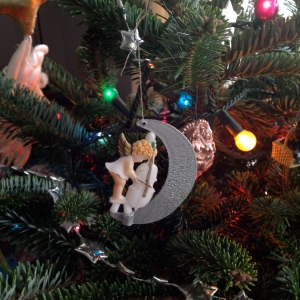Every week, after my harp lesson, I pull out my practice planner and write down what I want to make sure that I remember from my lesson, what workshop facilitators and teachers call “take-aways.” This week’s lesson went deep. My teacher and I discussed a post from The Bulletproof Musician, about musicians being on the same path, and passing the same milestones. Some are just further down the path than others.
My teacher talked about the challenges of working on new music while knowing harpists who might sit down and play the same new pieces in half the time. I talked about my challenge with still having to program every bit of playing choreography into my fingers, slowly repeating each movement until left and right hand can dance together on the strings. I long for spontaneity, for being able to combine accompaniment patterns without first writing them out and programming them into my fingers.
Yet the real challenges are being kind to ourselves, and accepting and welcoming being exactly where we are, and recognizing and celebrating what we have accomplished so far. And from that kind and welcoming place, sitting down on the harp bench and doing the work, whatever that work is right now, today.
For me, the work is to become automatic with more left hand patterns, and to be quicker to knit these new patterns together with a melody line. My teacher assures me that as new patterns and hand shapes become imbedded in my musical vocabulary, the more I will be able to draw on them to express what I am trying to say with my music. Spontaneity will emerge naturally as my vocabulary of patterns deepens, as I carefully teach each finger how to play with these new accompaniment ideas.
I pulled a notebook off my bookshelf yesterday, the one labeled “Left Hand Patterns and Accompaniments.” I remembered that when I first started this notebook, playing a 1-5-8 left-hand pattern was still hard for me to do. I remembered that when I started harp lessons I could not play that pattern at all. For years, every time I found anything about playing the left hand, I put it in this notebook. It’s been waiting for me, waiting for the day when my brain and my hands could understand these new and different ways of moving.
Reading through these handouts, I found out that my left hand can play all of them. My fingers can find the right strings and pluck the correct rhythms of all these complex left-hand patterns. What ever magic happens to create new capabilities of muscle control was at work behind the scenes, without fanfare or my noticing. Now my challenge is to pick the left-hand patterns that offer me the widest range of useful possibilities, and begin to match new left-hand patterns to right-hand melodies and improvisations. I reached another way-marker on the path, without even realizing that I was traveling forward.
My lesson: Whenever I am sitting on the harp bench, present and aware of my practicing, mindful of my work, I am progressing. I am traveling forward on this path of being a musician. I am learning, I am forming new neural connections, I am expanding my possibilities. The magic is at work, making me a more skilled and confident musician, whether or not I notice it happening. What looks like being stuck, or at a plateau, or making no progress at all, is in reality a mysterious and secret consolidation of intent and experience; a process that keeps its own private timetable of completions, of announcing that I’ve taken another step forward on the path.
My harp mantra, the one I routinely forget, is “It takes what it takes.” However much time and repetition it takes to secure a new point of mastery will not be determined by my desires and demands for quicker learning and quicker results. I can’t demand a seed to sprout sooner, to grow faster, because I want to eat a juicy , red garden tomato next week. It takes what it takes to grow a tomato. And it takes what it takes to grow a musician.
My job is to sit down on the harp bench with the harp and do the work. To keep the weeds of expectations and comparisons out of my musical garden. To stop whining about what I can’t do, and what I think I should be able to do, and play. And then, just for a moment, appreciate how far I’ve traveled from when I first pulled a harp to my heart and for the very first time, plucked a string.
Would you like to share this post?















